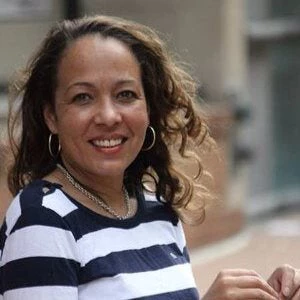Over a billion people— about 15% of the world’s population—have disabilities. Almost 80% of them live in the developing world, which is undergoing rapid urbanization.
While urbanization brings people closer to new economic and sociocultural opportunities, persons with disabilities still face a range of constraints in many cities , such as inaccessible buildings and public spaces, limited transportation options, inaccessible housing, and barriers in using technology-enabled virtual environments.
These urban constraints have a significant impact on those living with disabilities in terms of mobility, ability to engage in education and skills development, employability and income generation, and larger social and political participation.
Therefore, urban development must acknowledge and plan for the needs of a diverse population which includes persons with disabilities. And there is no better time than now to make that happen.
The New Urban Agenda for inclusive, livable cities
The “ New Urban Agenda” adopted at the Habitat III conference this October offers an unprecedented opportunity for countries to work toward universal access to city spaces and infrastructure for persons with disabilities and older persons. This builds on the moral and legal imperative for accessibility through the Convention on the Rights of Persons with Disabilities—which is celebrating its 10 th anniversary—as well as the UN Sustainable Development Goals (SDGs). Targets under Goal 11 specifically reference affordable housing, accessible transport systems, disaster resilient infrastructure, and universal access to green and public spaces.
Entry points for inclusive urban growth
How can we build inclusive, safe, resilient, and sustainable cities without leaving behind persons with disabilities? The New Urban Agenda and the SDGs point out several actions to start with:
-
Improving building codes and regulations: Designing universally accessible buildings has proven to be significantly more cost efficient than retrofitting ones that are not. That’s why urban design and planning should incorporate accessibility into building codes and standards, and universal design and accessibility should be factored into the design phase of any urban development project. In addition, social assessments—including risk analysis, social impacts, and social sustainability—also need to include current gaps and barriers for persons with disabilities across sectors. Launched by GFDRR, the Building Regulation for Resilience initiative seeks to create an enabling environment for accessibility measures, and promotes the idea that building codes and standards must be developed and updated through inclusive, transparent, participatory, and resource efficient.
-
Building the capacity of policymakers, civil society, and other stakeholders: Capacity development—including providing knowledge and tools—is an important part of implementing the New Urban Agenda. In terms of accessibility, capacity building must target (i) local and national policymakers on understanding and implementing disability-inclusive development, and (ii) persons with disabilities, Disabled Persons’ Organizations (DPOs), and civil society so that they can become effective and informed partners in engaging in consultations with policymakers. Moreover, inclusive development recognizes diversity and aims at involving everybody into the development process. It is crucial to raise awareness and build capacity of architects, designers, engineers, and product developers by integrating universal design and accessibility into degree, diploma, and certification programs.
-
Using information and communication technology (ICT) as an enabler: Technology innovations and ICT-enabled services are playing an instrumental role in shaping urban spaces and urban living. “Smart cities” use digital technologies to deliver improved and efficient public services, use interconnected mobile devices for improved information gathering, and improve relationships between governments and their citizens through new mechanisms for feedback, grievances, and interactions. Accessible digital technologies radically transform how persons with disabilities can communicate and manage information. Adopting accessibility design standards into digital technologies can break barriers to socioeconomic participation, financial inclusion, access to e-governance, disaster management services, civic participation, and community engagement for persons with disabilities.
-
Respecting cultural diversity and promoting participatory design: Sustainable, universal urban design is local-environment specific, and should be responsive to cultural norms and sensitivities. Local community users—including the disabled and older community members—should be involved in consultations, planning, inspections, and monitoring. Developing sensitivity for the need and benefits of inclusion and generating a sense of ownership on inclusive design will also promote a culture of compliance rather than sole reliance on enforcement mechanisms. While top-down policy reforms, codes, and regulations are essential, cultivating bottom-up participatory processes to realize accessible urban development is key to converting policy into real change.
Related links:
- [The Huffington Post] Accessibility and the New Urban Agenda: 5 Questions
- [Video] Dr. Víctor Pineda: A Call for "Radical Inclusion" of Persons with Disabilities
- [Feature story] Partnering to Promote Inclusion and Opportunity for Persons with Disabilities
- [Feature story] For Persons with Disabilities, Accessible Transport Provides Pathways to Opportunity



Join the Conversation